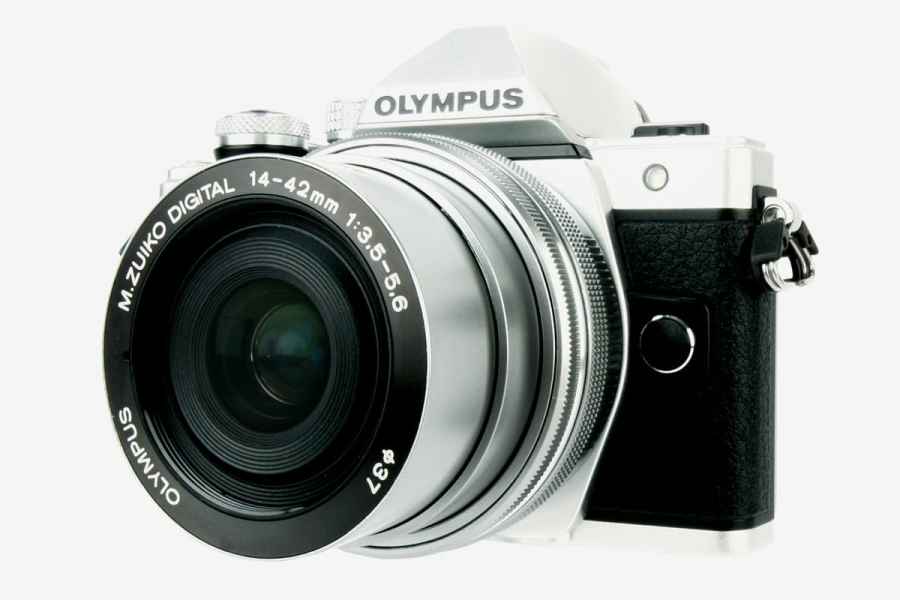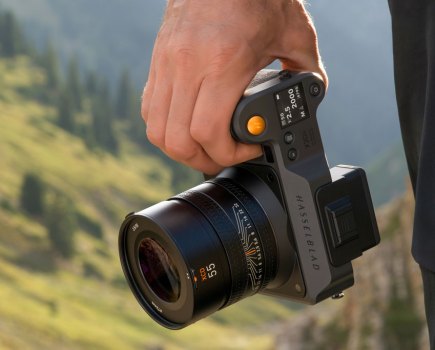Olympus OM-D E-M10 II review: Introduction
At a glance
- 16.1-million-pixel, Four Thirds sensor
- ISO 100-25,600 (extended)
- 5-axis image stabilisation
- 8.5fps-burst shooting mode
- 2.36-million-dot EVF
- 3in, 1.04-million-dot LCD
- Full HD video recording
- Built-in Wi-Fi
- £550 (body only)
It’s hard to believe that Olympus’s digital revival of its OM system hasn’t even reached its fifth birthday, given how popular it has proven to be since the first OM-D E-M5. Having catered for novice users and enthusiasts with three tiers of models, the Japanese company has begun to refresh the line with second-generation upgrades, most recently the mid-range OM-D E-M5 Mark II and now the more junior OM-D E-M10 Mark II.
Just as the original OM-D E-M10 benefited from a core specification set inherited from its elder siblings, the Mark II version is bolstered by a handful of recently seen developments. While Olympus has chosen to leave the sensor and processor alone, a wealth of changes around the rest of the spec sheet make for a significantly different camera to the one being replaced.
Crucially, the camera gains a similar 5-axis image-stabilisation system to the acclaimed versions seen in the OM-D E-M1 and E-M5 Mark II, while improvements to the electronic viewfinder and video functionality strengthen its position in a crowded sector of the market. Unlike the OM-D E-M5 Mark II, the E-M10 Mark II fails to offer weather-sealing, nor does it stretch to offer that camera’s impressive 40MP High Res Shot mode, but then these are exactly the sort of concessions we would expect to see on such a model.
Olympus OM-D E-M10 II review: Features
At its heart, the E-M10 Mark II offers the combination of a 16.1MP Micro Four Thirds sensor and TruePic VII processing engine. This partnership has served previous models, including the E-M10 it replaces. The sensor’s sensitivity range starts at ISO 200 and culminates at ISO 25,600, although it can be adjusted down to an equivalent of ISO 100 where necessary.
The E-M10 made do with a 3-axis image-stabilisation system, but the E-M10 Mark II gains a 5-axis version that’s effective when shooting images and videos. While similar to the E-M5 Mark II’s unit, its compensatory effect is stated as being a maximum of 4EV stops, rather than the 5EV offered by the E-M5 Mark II. This still fares well against the competition and represents an improvement of 1⁄2EV stop over the E-M10. As with all of Olympus’s interchangeable-lens models, the sensor is fronted by a Supersonic Wave Filter, which vibrates dust particles onto an adhesive strip to banish their shadows from images.
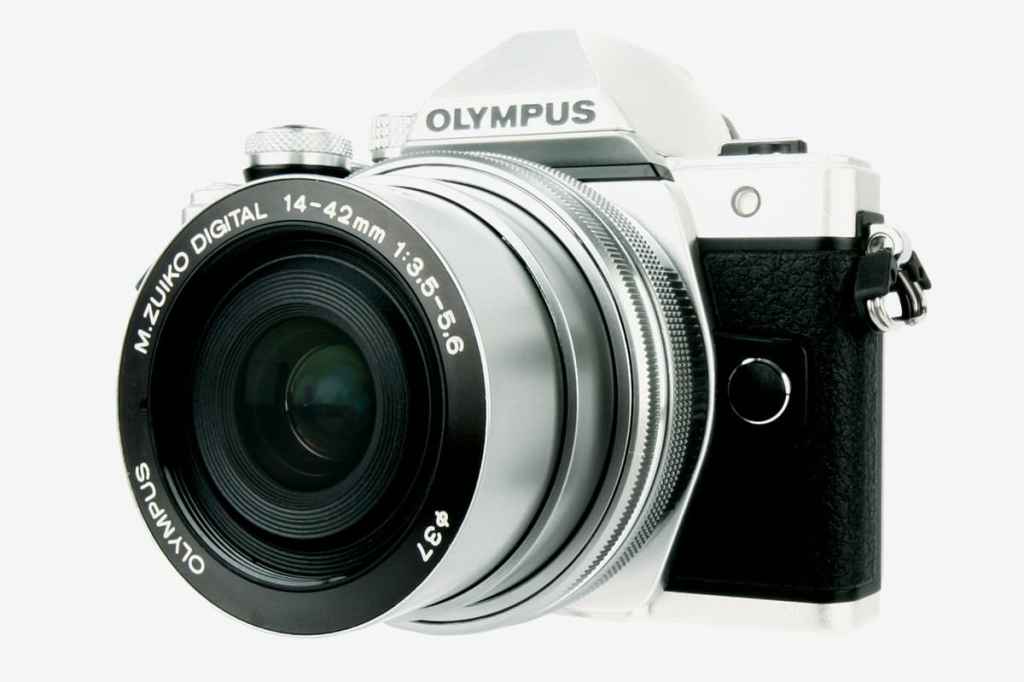
The E-M10 Mark II’s standard shutter-speed range stretches from 1/4000sec-60secs, although the electronic shutter extends the former figure to 1/16,000sec and the bulb mode can be used to capture exposures up to 30 minutes in length. Fortunately, you can watch particularly long exposures developing with the Live Bulb option, while activating the Live Time option means you don’t have to keep the shutter release pressed down during the exposure – you just release the shutter again to stop it. Olympus’s Live Composite option is also on hand, which blends consecutively captured images together without blowing highlights, so it’s ideal for capturing star trails and fireworks.
Thanks to the electronic shutter, the E-M10 Mark II offers a silent mode when shooting either single images or continuous bursts, or alternatively when using the timer option. In use, the camera isn’t completely silent when this is employed but it’s only really audible in silent conditions. Indeed, the whirring from the camera’s image-stabilisation system is most noticeable.
The E-M10 was already a capable performer with regards to its burst-shooting capabilities, offering 8fps for up to 20 raw frames, but Olympus has marginally improved this on the new model. The E-M10 Mark II stretches to 8.5fps for up to 22 raw frames, or an unlimited number of JPEGs, provided your card is fast enough to keep up.
There’s also a 4fps ‘Low’ option should 8.5fps be too speedy, although you can set this to be anything up to 4fps (and, likewise, the ‘High’ option can be adjusted to any speed down to 5fps). Should 8.5fps not be fast enough, you can also boost the camera’s frame rate to 11fps in Silent mode.
One of the more significant upgrades concerns the E-M10 Mark II’s video-recording options, which mostly mirror those offered by the more senior E-M5 Mark II. The camera offers full HD recording up to 60p, and a choice of frame rates from 24p up to this, while a new ALL-I compression mode allows for a bitrate of 77Mbps.
There’s also a 120fps high-speed recording mode, although this is limited to a VGA (640×480) resolution, and a CLIPS mode that captures 1sec, 2sec, 4sec or 8sec clips and stitches them all into a single video – a feature similar to Canon’s Video Snapshot option.
Regardless of their target user, Olympus’s mirrorless models have always featured a more playful side, and the E-M10 Mark II continues this with its instant-collage-making photo story option and a collection of Art filters. The latter function includes two options first seen on the Pen E-PL7, namely ‘vintage’ and ‘partial colour’, and these join a collection of previous treatments such as grainy film, pop art and soft focus. What’s particularly helpful is that you can bracket images with up to all 14 filters at once, and raw images can be saved alongside any art-filtered images as a handy back-up.
Mini HDMI and a USB 2.0 ports hide behind a small door at the E-M10 Mark II’s side, although there’s no input for external microphones. There is, however, a hotshoe on the top-plate should you want to use an external flashgun as an alternative to the small unit built into the body.
Another door at the camera’s base-plate opens to reveal a battery compartment, with the battery itself promising around 320 images on a full charge, as well as a single card slot that accepts SD, SDHC and SDXC media. This is positioned rather close to the hinge, so removing cards can be a little awkward.
Fortunately, with Wi-Fi built into the body, you may not need to reach for the memory card as often as normal. This works in conjunction with Olympus’s OI Share app for both Android and iOS devices, and allows you to remotely control the camera from a smart device or transmit images and videos without any cables.
Olympus OM-D E-M10 II review: Viewfinder and screen
The E-M10 Mark II’s rear display is mounted on a hinge and pulls away from the body easily, and it can be angled up and down as the shooting conditions require. When angled up, images can be easily captured from ground level, although I found the viewfinder’s eyecup can get in the way of the display when the camera is also angled slightly.
Otherwise, the screen is detailed and presents scenes well. Its touch functionality is also useful when holding the camera at an angle, in that it can focus and expose for a subject where it might be difficult to do so through the shutter-release button. This happens promptly and I found it useful for capturing subjects occupying a small section of the display.
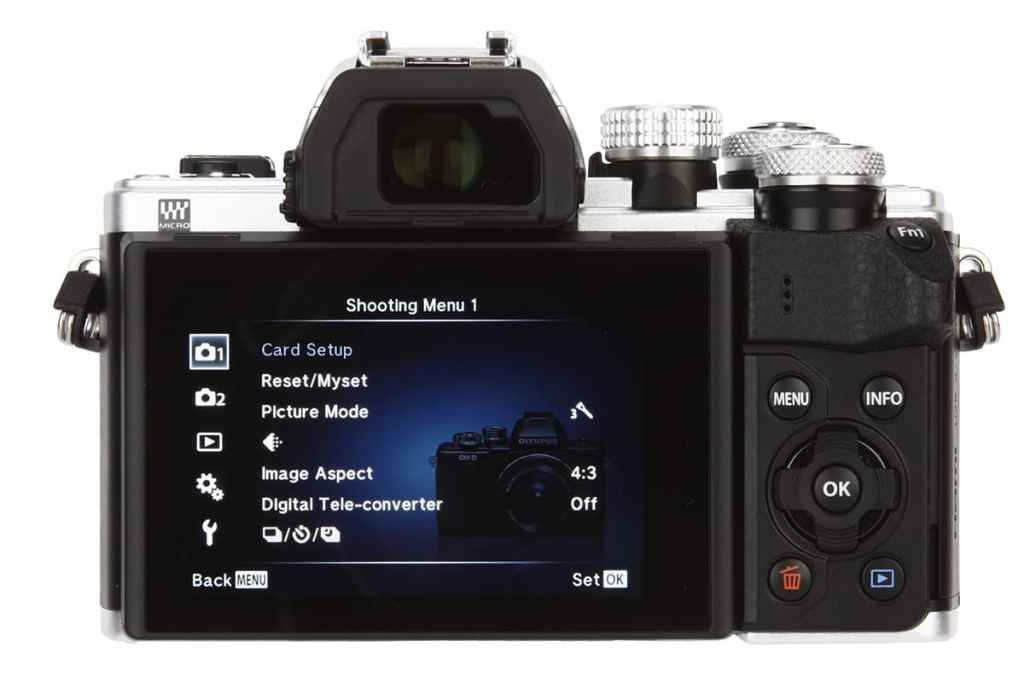
The LCD may have stayed the same as that on the E-M10, but the viewfinder on the E-M10 Mark II has received a substantial upgrade. Not only has Olympus switched the previous LCD panel for an OLED one, but its resolution has also jumped from 1.44 million dots to 2.36 million dots and its maximum magnification has also risen from 1.15x to 1.23x (equivalent to about 0.61x).
Scenes with a wide dynamic range tax any electronic viewfinder and this one is no exception, but Olympus has the answer with a new Simulated Optical Viewfinder function. This, the company claims, extends the EVF’s dynamic range to bring it closer in line with what you would see through an optical viewfinder. I found it useful to assign this feature to the Fn3 button on the top-plate so it could be quickly activated as and when required. It works well to regain the finder’s highlight, although I found shadow details could be seen just as clearly – if not more so – without this on.
Olympus OM-D E-M10 II review: Build and handling
While the spec sheet reveals minor differences in size and weight between the E-M10 and the Mark II version, these are small enough to be imperceptible. The key thing is that, like the E-M10, the new model is remarkably compact and portable, especially when it’s partnered with the pancake M.Zuiko 14-42mm f/3.5-5.6 EZ kit option or one of the company’s small prime lenses.

The body is made from metal, with plastic around the sides, back and display, and a textured plastic covers much of the front-plate. The latter looks smart and provides a little extra purchase, although the softer, faux-leather coverings of models from other manufacturers feel a touch nicer in the hand. Although this combination of materials helps to keep weight below 400g, the camera still feels solid.
With the exception of the OM-D E-M1, I haven’t found previous OM-D models to have provided quite the handling or shooting experience of other compact system cameras, with controls generally on the small and stiff side, and some awkwardly recessed in very angular bodies. However, the E-M10 Mark II has been tweaked very much for the better. The on/off switch has been relocated from a corner of the back-plate to a more prominent spot on the top-plate, its position and styling now making it slightly easier to turn than before.
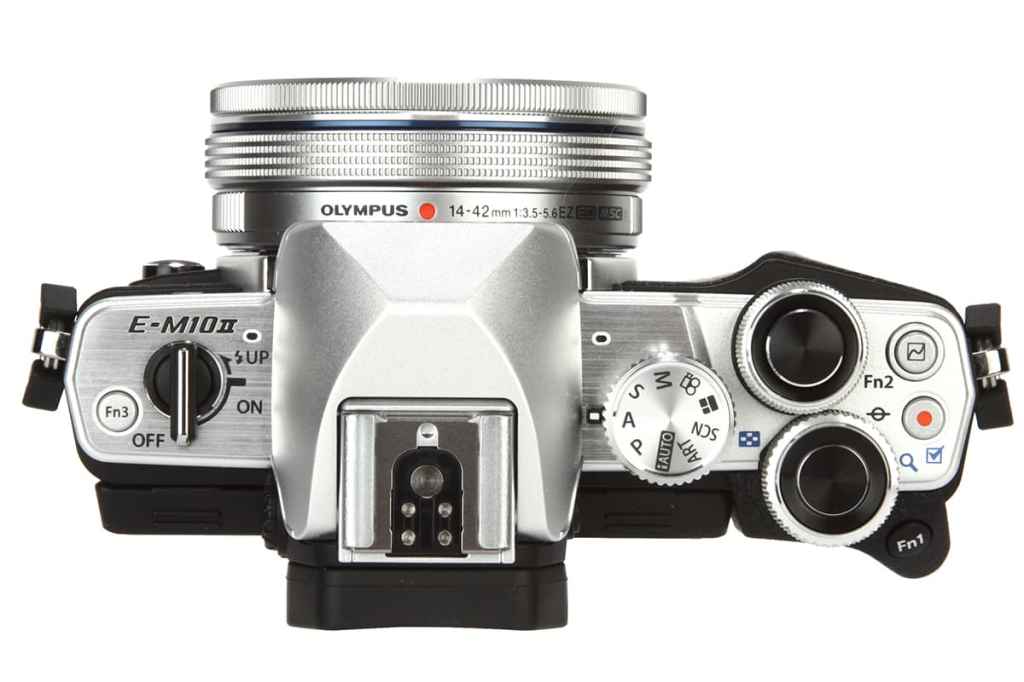
While the E-M10’s twin command dials have been maintained, they’ve been styled much like the E-M5 Mark II’s, with smartly milled edges and a two-tone finish. They have also shifted a little – ostensibly to accommodate the repositioned mode dial – and stand much prouder from the top-plate than before, which in turn makes them easier to operate than the E-M10’s flat dials. Together with their slackness, however, they can be knocked a little too easily and I often found myself shooting with the exposure compensation unintentionally adjusted. Their proximity to the mode dial also meant they would turn when the exposure mode was changed.
Olympus has gently restyled the E-M10’s grip for the E-M10 Mark II and made the thumb rest on the rear a little more substantial, too, with the result being a camera that feels positive when held with either one hand or both. Its light weight and small size mean it can be used successfully with one hand when low to the ground and the screen angled upwards, with the benefit of the effective IS system helping to keep things steady here. The camera can also be used with the optional ECG-3 grip that has been specifically designed for it.
Olympus OM-D E-M10 II review: Focusing
The OM-D E-M10 employs the same 81-point contrast-detect AF system as its predecessor, and it comes with a multitude of options to suit your shooting style and subject. Single, continuous and manual-focus options are joined by AF-tracking and face-detection settings, and you can also focus on your subject using the camera’s touchscreen. There are no phase-detect pixels on the sensor as there are on the E-M1, and as these come into effect on that camera when tracking moving subjects, it’s likely a side-by-side comparison in such a scenario would show the E-M1 to be faster.
Nevertheless, I found the E-M10 Mark II fared well when set to track moving subjects; it stuck with them even when they appeared similar to the background, and continued to adhere when the camera was jerked one way or the other.

This image was captured from waist height. The touchscreen was used to locate the point of focus on the squirrel
The aforementioned settings are complemented by a focus-bracketing setting, which captures images with different areas of focus so they can be subsequently blended into a single image with extended depth of field, as well as AF targeting pad, which is similar to the touch pad AF feature found in recent Panasonic CSCs. This allows you to select the AF point through the touchscreen while using the viewfinder. The standard way of moving the camera’s focusing point through the directional buttons isn’t particularly difficult or time consuming when using the viewfinder, and this is what I ended up using for the majority of shots.
Olympus OM-D E-M10 II review: Performance
I was particularly impressed with the 5-axis image-stabilisation system in the E-M5 Mark II, so it’s welcome to see a similar system incorporated into a much cheaper body. During my first few outings with the camera, the feed on the rear display was sometimes so still after focusing on the subject that it appeared as though I was looking at the captured image rather than the live view.

While not quite infallible, the camera’s default multi-metering pattern does well to balance most scenes
Its effectiveness was confirmed when images were carefully examined in Photoshop, with sharp results down to 1/5sec at a focal length of 42mm (84mm in 35mm terms), which represents a benefit of around 4EV stops – exactly as promised. It’s worth bearing in mind that exactly how sharp your images end up is subject to a host of factors, such as the lens you use, subject distance and your technique.
The default picture (colour) mode is ‘Natural’, and it does as it promises. Colours are close to how they are perceived in reality, which is great for everyday use, but perhaps less so when shooting landscapes or any nature scenes where you might want a little more vibrancy. Moving to the ‘Vivid’ option does just this, although it’s also possible to nudge saturation up a little upon playback without losing touch with reality.

The shallow depth of field in this image was created by pairing the OM-D E-M10 Mark II with the Olympus 45mm f/1.8 M.Zuiko lens
Repeated exposures of the same subject show the camera’s auto white balance performance to be accurate and consistent, only tending to struggle a little in more monochromatic scenes, although I was impressed by its performance overall in mixed-lighting conditions.
The camera’s metering system performed admirably throughout various challenges, although occasionally, when faced with darker details, there did appear to be a tendency to overexpose the scene a little too easily, forcing highlight detail to be lost. As this was typically only around 1EV or so out of line, some of this can be successfully regained in post production.
Signs of noise can be witnessed as far down as ISO 200 in images captured in fair conditions, with a very slight texture in shadow areas from the camera’s noise-reduction system in JPEGs when set to the standard noise-reduction setting. The extent to which the camera reduces noise can be adjusted up and down if preferred, or turned off completely.
Olympus OM-D E-M10 II review: 4K Time Lapse
The Olympus OM-D E-M10 Mark II is one of a slew of recent cameras to offer a 4K-oriented feature, although it falls short of offering a 4K video option at a standard frame rate.
Here, it’s a 4K Time Lapse Movie mode, which essentially extends the capabilities of the E-M10’s timelapse option. Not only can the camera capture up to 999 frames at an interval of your choice and stitch them together into a 4K-resolution video, but you can also delay the capture of the first exposure and choose whether to simply capture the images alone or have the camera compile them into the video.It even provides start and finish times, together with the length of the movie to save any guesswork.
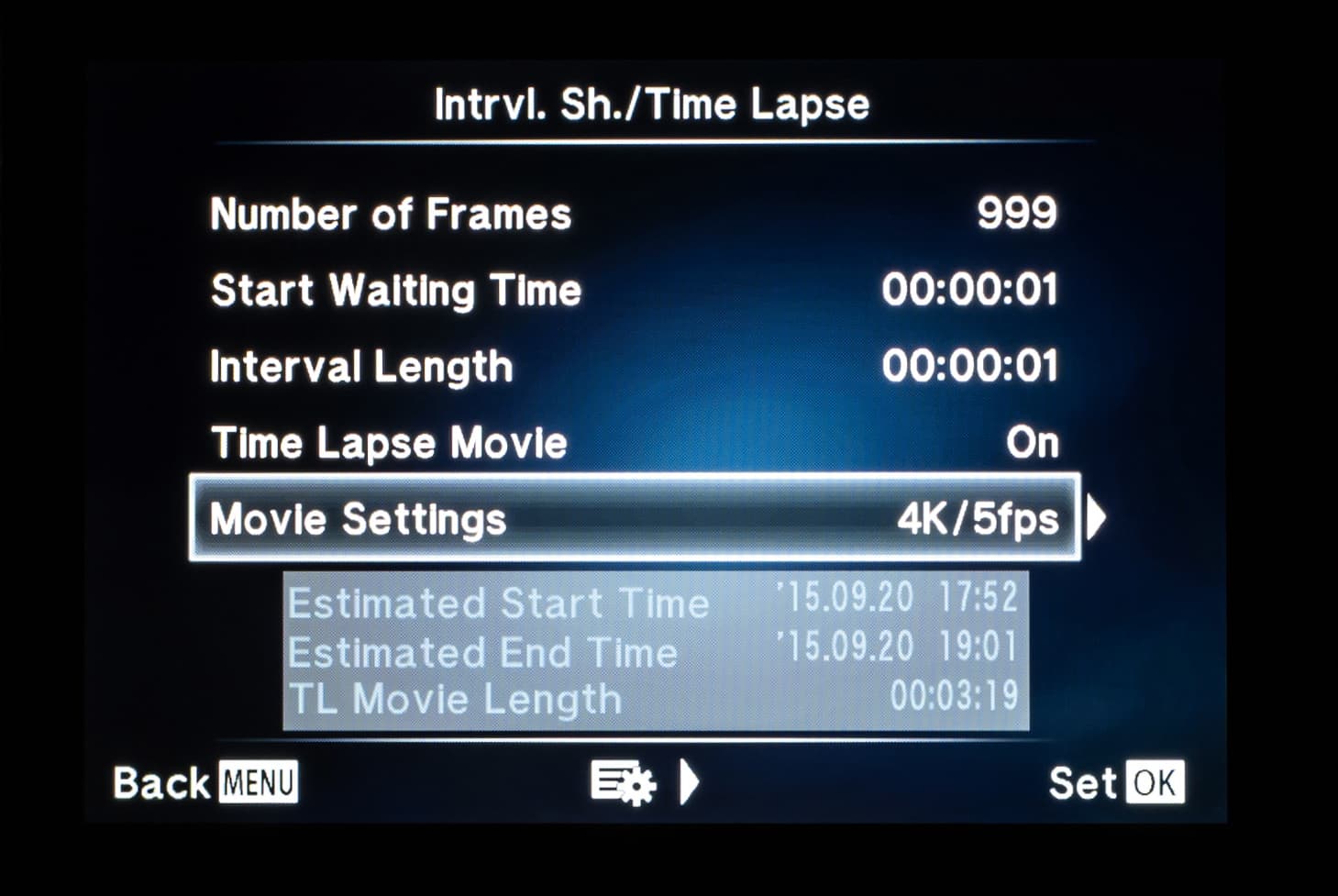
The caveat is that timelapse video can only be output at 5fps in 4K. Knocked down to full HD (1080p) it can be output in a choice of three frame rates up to 15fps, and down further still to standard HD (720p) increases this to a maximum 30fps. While there are some situations in which the 4K/5fps mode is usable, most users, in the majority of situations, will clearly prefer the more fluid results achievable by the latter options. No doubt in future models we’ll see this frame rate increase when capturing and outputting in 4K.
Since announcing the OM-D E-M10 Mark II, Olympus has confirmed that forthcoming firmware updates will allow users of the OM-D E-M1 and OM-D E-M5 Mark II also to have access to the functionality, among a raft of other options. Version 2.0 firmware for the OM-D E-M5 Mark II and v4.0 firmware for the OM-D E-M1 are scheduled for release in late November.
Olympus OM-D E-M10 II review: Resolution, dynamic range and noise
Dynamic Range
The sensor may be smaller than APS-C types in rival cameras but it still manages to hold its own in terms of dynamic range, recording an impressive 12.7EV stops at ISO 100 in our Applied Imaging tests. This holds up well until around ISO 400 where it falls to a still respectable 11.8EV stops, after which point it steadily decreases. We see a quite usable 7.9EV dynamic range at ISO 3200, but beyond this the sensor performs more poorly, even dipping to below 6EV at ISO 25,600.

Resolution
While the camera may lack the 40MP High Res Shot mode found in the E-M5 Mark II – which we found is capable of resolving around 4,000lp/h – the level of detail captured is still impressive. At ISO 100 it manages around 3,000l/ph, a figure which holds up well until ISO 800 at least. ISO 3,200 is where things begin to tail off noticeably, from 2,800l/ph captured at this setting, before more consistent drops in resolution with each subsequent sensitivity setting until the camera’s upper limit of ISO 25,600.

ISO 100
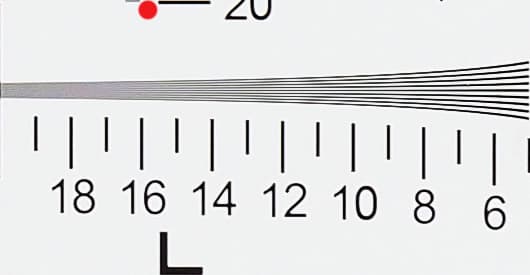
ISO 400
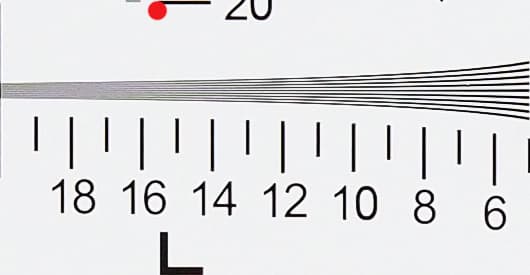
ISO 800

ISO 3200

ISO 6400
Noise
Noise is visible slightly earlier in the camera’s sensitivity range than similar systems toting APS-C sensors, but good results can still be had at the lower end of the sensitivity range. Noise begins to become more visible at around ISO 800, with luminance noise becoming increasingly obvious as you push towards ISO 3,200. Detail is well preserved up to ISO 1,600, beyond which it slowly starts to tail off – something you only really notice when you’re studying images at high magnification. For day-to-day use and in low-light scenes that demand a higher sensitivity I’d be prepared to push the sensitivity up to ISO 3,200 without too much cause for concern. As is often the case, it’s the last sensitivity in the range that appears to show the most significant shift. In an emergency, I’d be prepared to shoot at ISO 6,400 or 12,800, but ISO 25,600 should be avoided at all costs.
Olympus OM-D E-M10 II review: Verdict
The Olympus OM-D E-M10 Mark II is undeniably a handsome, well-built and highly specified camera that’s capable of taking fine images. Despite being a junior model in the OM-D line-up, it defies its billing by offering many of the key features found in its more advanced siblings.
Some may be irked that the sensor hasn’t jumped past the 16MP mark, particularly with the recent arrival of the 20.3MP Micro Four Thirds Panasonic Lumix DMC-GX8. Nevertheless, images are perfectly usable straight from the camera, with the benefit of largely accurate metering and white balance systems. Taking the slight patterning from noise and noise reduction across the sensitivity range into account, however, users would be best advised to acquaint themselves with the effects of the camera’s noise-reduction settings to find out what they would prefer as a default setting – or of course, process raw images to their liking.

When you examine the differences between the camera and the next model up, the OM-D E-M5 Mark II, the E-M10 Mark II looks like something of a bargain, being around £320 cheaper at current street prices. Aside from the weathersealing and the 40MP High Res shot mode, the majority of the E-M5 Mark II’s advantages are extensions of what we see here; an IS system that promises 5 stops of correction instead of 4; a 10fps burst rate next to the 8.5 frames here; a vari-angle LCD screen instead of a tiltable one and so on. By this measure, the E-M10 Mark II is a camera that offers excellent value for money.
It’s also a far more significant upgrade over the E-M10, with plenty to justify the premium of around £150. Indeed, it’s not inconceivable that some E-M10 users would trade their models in for the better viewfinder, advanced video specs and 5-axis IS system, particularly if they already own a few optics and only need the body.


